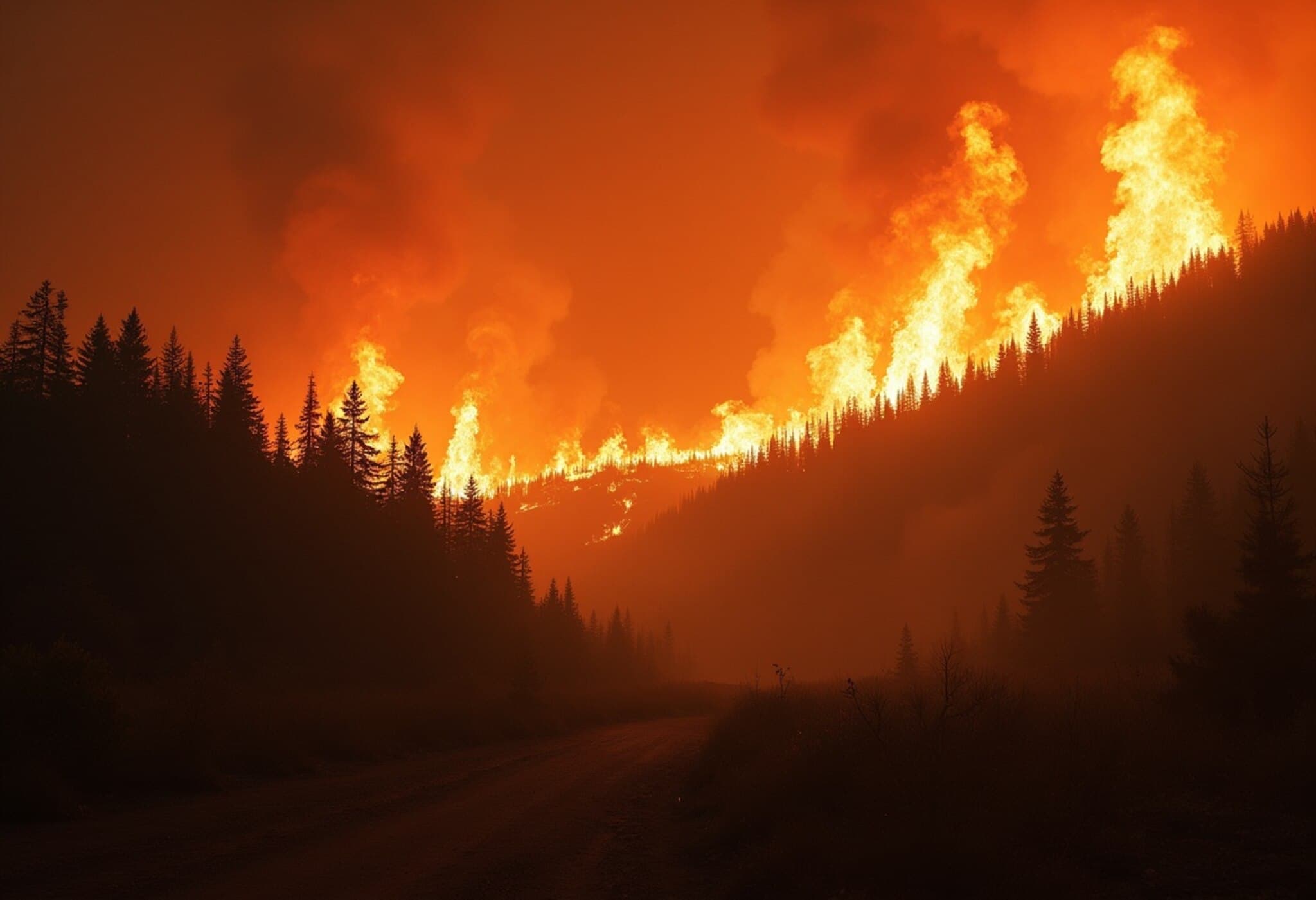Tragic Flash Floods and Landslides Ravage Northwestern China
At least 10 people have lost their lives and another 33 remain missing following severe flash floods in Yuzhong County, located in Gansu Province, northwestern China. The devastating natural disaster unfolded late Thursday and into Friday, as relentless downpours triggered violent floods and landslides that disrupted thousands of lives.
Mounting Toll in Gansu amid Intense Rainfall
According to Chinese state media, the floods were caused by persistent heavy rainfall starting Thursday, which unleashed sudden and destructive flash floods in the mountainous regions near Lanzhou, the provincial capital. Xionglong Mountain in particular suffered power outages and communications breakdowns, leaving over 4,000 residents isolated across four impacted villages.
In a particularly tragic incident, three individuals went missing after a landslide struck Maliantan village in Yuzhong County late Thursday. By early Friday, local authorities recorded a staggering 195 millimeters (7.7 inches) of rainfall—a volume significant enough to overwhelm the region's flood control capabilities.
National Response and Broader Context
President Xi Jinping has called for urgent and comprehensive rescue operations alongside enhanced flood prevention measures, emphasizing the need for swift action to safeguard affected communities. This calamity is part of a larger pattern of severe weather events battering parts of China in recent days.
In southern China, the metropolis of Guangzhou also faced tragedy, where flooding triggered a fatal landslide in the Baiyun district, resulting in 7 deaths and 7 injuries. Meanwhile, Zhengzhou, the capital of Henan Province, has been placed under stringent controls. Authorities there suspended schools, factories, and traffic in vulnerable areas following memories of the 2021 flood disaster that claimed 292 lives.
Understanding the Challenges Ahead
- Infrastructure Vulnerability: Mountainous terrains like Gansu are prone to landslides and runoff from heavy rainfall, highlighting the urgent need for improved flood management systems and early-warning mechanisms.
- Climate Change Impact: Experts note that the increasing frequency and severity of such floods in China align with broader climate change trends, escalating the risks faced by vulnerable populations.
- Emergency Preparedness: China's rapid urbanization and expanding populations in flood-prone areas underscore the critical importance of resilient infrastructure and community preparedness to mitigate future disasters.
Expert Insight: Navigating Climate-Driven Disasters in China
Dr. Mei Lin, a climatologist specializing in East Asian weather patterns, remarks, "These flash floods are a somber reminder of how climate variability is accelerating extreme weather events. While China has ramped up flood control infrastructure over the decades, the scale and unpredictability of these events require even more adaptive strategies—ranging from smarter land-use planning to community-based early warning systems."
She also highlights socio-economic dimensions: "Rural and mountainous communities often bear the brunt of such disasters, and their recovery is slower due to limited resources. Balancing rapid economic growth with environmental resilience remains a pressing challenge for policy-makers."
Looking Ahead: The Path to Resilience
As recovery efforts continue in Gansu, the floods underscore the vital need for multi-disciplinary approaches combining meteorology, infrastructure engineering, and social policy to enhance disaster readiness. Moreover, international cooperation on climate adaptation strategies can provide valuable lessons for regions worldwide confronting similar threats.
What Remains Uncertain?
- How effectively will local governments rebuild infrastructure ensuring safety against future floods?
- Can community education and evacuation protocols be improved to reduce casualties?
- What role should national policy play in integrating climate models into regional planning?
Editor’s Note
These harrowing reports from northwestern China offer more than just immediate tragedy—they serve as a powerful illustration of humanity’s ongoing struggle with the mounting impacts of climate change. While the death toll is still climbing, the resilience and response strategies of affected communities will shape how future disasters are managed. For American readers and policy-makers alike, understanding such global climate challenges is essential, as extreme weather increasingly knows no borders.
Stay informed, ask critical questions, and advocate for science-driven policies that prioritize vulnerability reduction. Disasters like these will likely become more frequent, making preparedness a shared global responsibility.



















